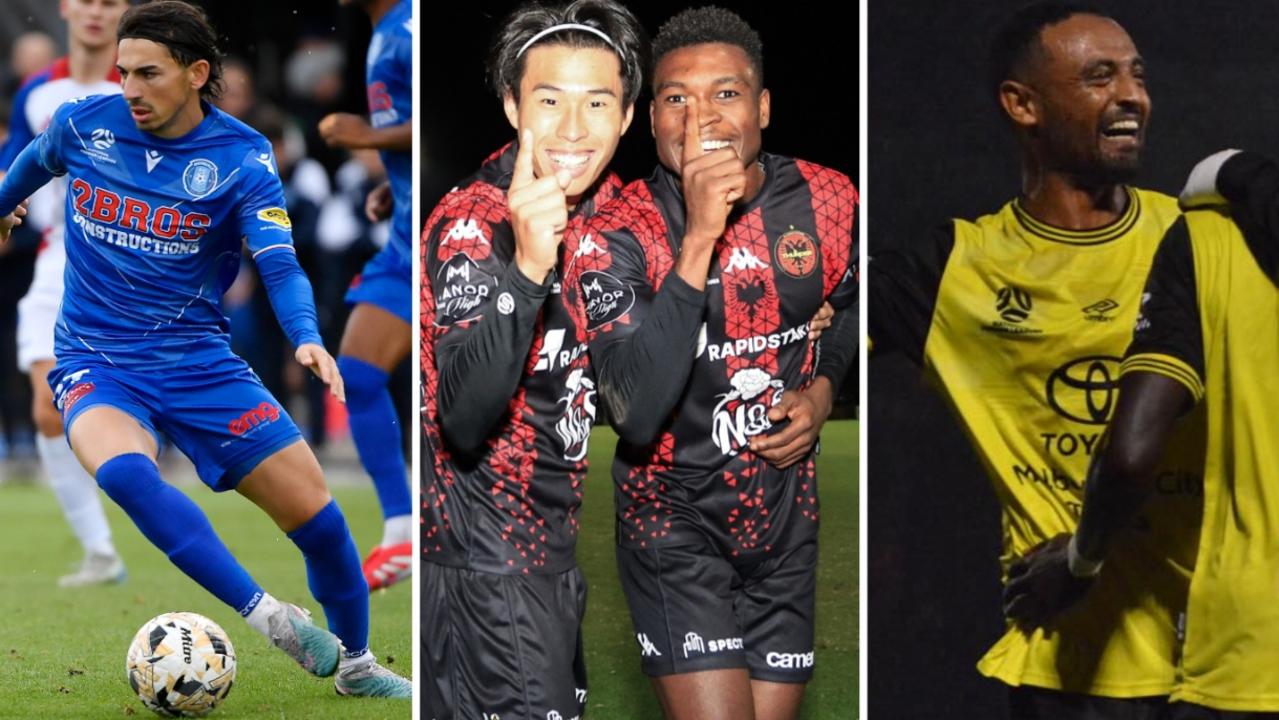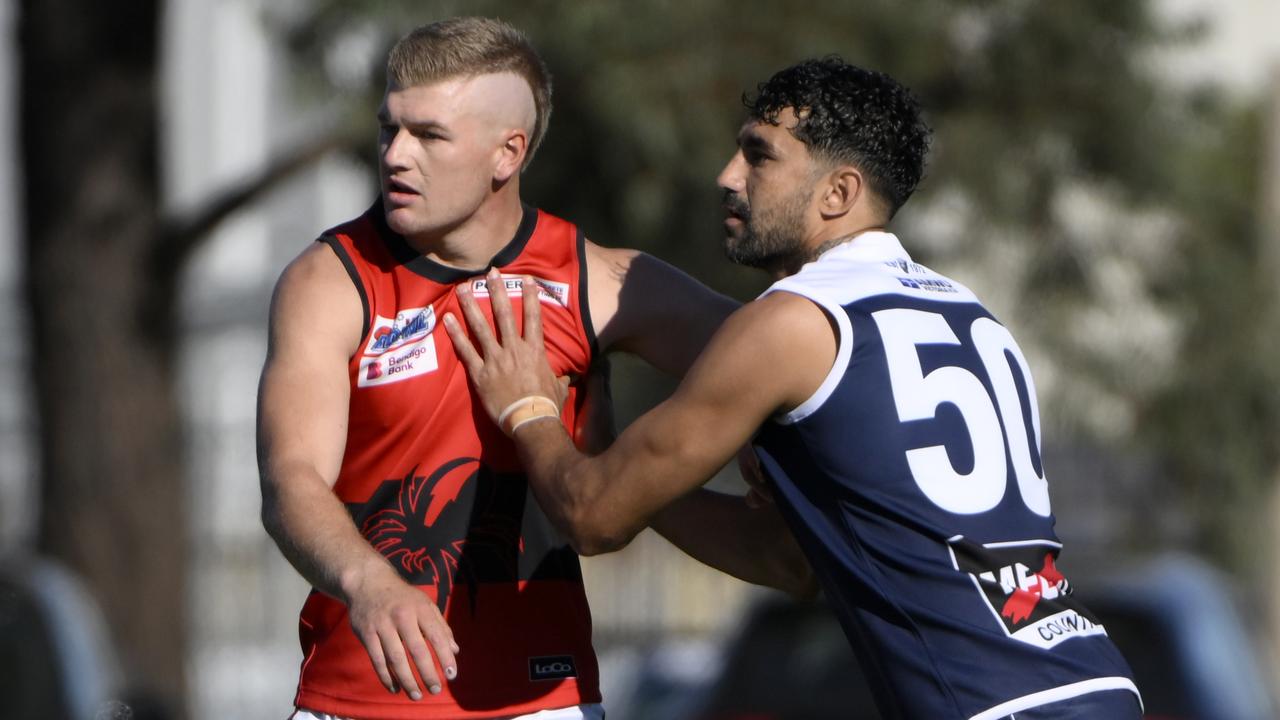Cricket Victoria chairman Geoff Tamblyn retiring after a lifetime in the sport
HE has devoted his life to Victorian cricket and now says it time for someone else to take over. But Geoff Tamblyn tells Paul Amy the ride has been worth it.
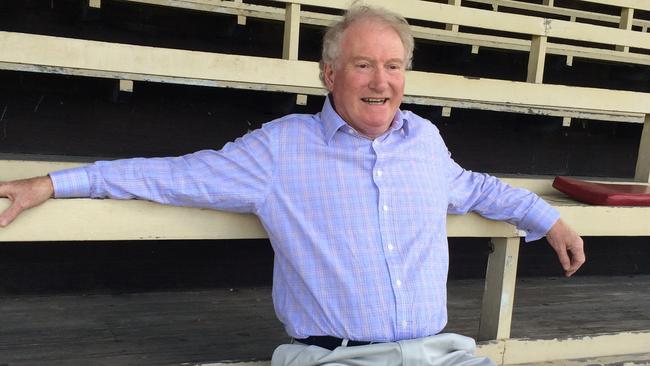
Inner South
Don't miss out on the headlines from Inner South. Followed categories will be added to My News.
A SWARM of suits and TV cameras are at the Junction Oval, and Geoff Tamblyn wants to dodge them.
“We’ll slip out here,’’ the recently retired chairman of Cricket Victoria says, nodding to the Fitzroy St entrance.
“I’ve had my time. I’ll keep out of the way now.’’
Cricket officials and politicians are at the historic ground to give an update on its $40 million transformation into a dedicated cricket venue.
Tamblyn is at the ground for an interview with Leader, to reflect on his long time in cricket, as a St Kilda wicketkeeper-batsman and a state and national administrator.
As the head of the CV board he helped remove a stream of government red-tape and get the redevelopment off the ground.
Unaware a media conference had been called to provide a progress report on the project, Tamblyn is keen to be neither seen nor heard.
A few minutes later he parks himself on an out-of-the way bench giving an expansive view of a ground that has been such a big part of his life.
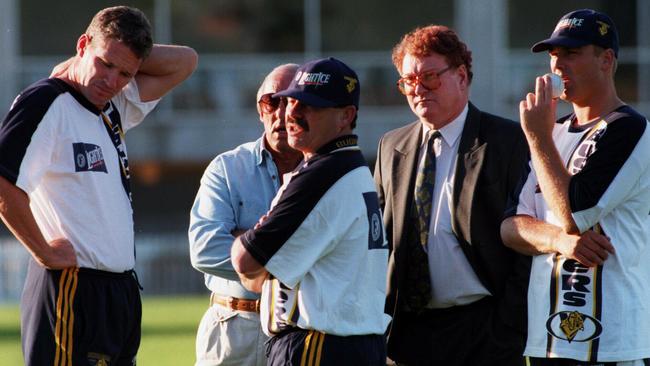
As the suits talk and the cameras roll, glorious sunshine bathes the Junction. The Blackie-Ironmonger stand is in front of Tamblyn, the Morton Pavilion to the right, the scoreboard a little further around.
Tamblyn can recall attending the opening of the now heritage-listed scoreboard. He was a schoolboy and went with his father, the legendary St Kilda player and secretary and 21-match Victorian batsman Gordon Tamblyn.
“From memory Robert Menzies did the honours,’’ he says.
Gordon Tamblyn made 19 centuries for St Kilda, reaching the ton against every club bar Carlton. His son made up for him. Geoff Tamblyn’s only century was against the Blues in 1974-75, when he shared a century partnership with Bill Lawry.
That Carlton team featured the great English fast bowler John Snow, but he broke down in his second over. “I think I was blessed, in a sense,’’ Geoff Tamblyn says with a laugh.
He started with the Saints in late 1967 after his matriculation exams at Caulfield Grammar, which he’d captained to an APS premiership team.
In that first season he made 176 runs at 44, the best average in the team, but he was short of the qualification mark of 200 runs.
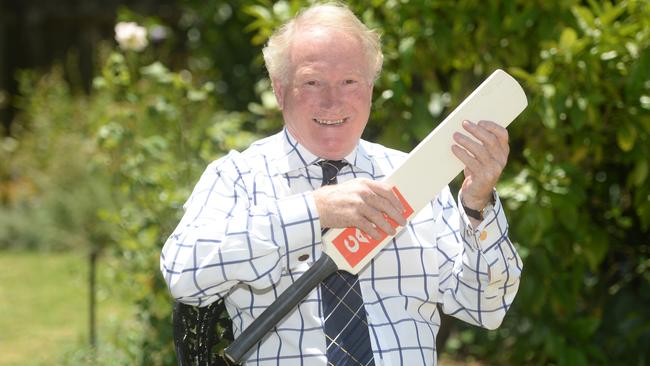
But he would later go on the honour board as the First XI captain and to take the club record for most wicketkeeping dismissals.
Tamblyn also earned a first-class appearance for Victoria, against Mike Denness’s English team in 1974-75 at the MCG when regular gloveman Richie Robinson was out injured.
His recall of the match is sharp: a big partnership between England openers Dennis Amiss and Brian Luckhurst, catching Keith Fletcher off the bowling of spinner Jim Higgs and batting with Max Walker for nigh on 90 minutes to help avoid an innings defeat.
Peter Lever had gone at him with short stuff and, fielding in close, Tony Greig mouthed a few salty words about his batting.
“He used some language that I’d certainly heard before but perhaps not as much on a cricket field,’’ he says.
The scorecard records “GL Tamblyn c Greig b Arnold 17’’ in the first dig and 15 not out in the second.
His captain, Ian Redpath, complimented his commitment to the Victorian cause.
That same season he also played a Gillette Cup game for the Vics against “Flat Jack’’ Simmons’s Tasmanians.
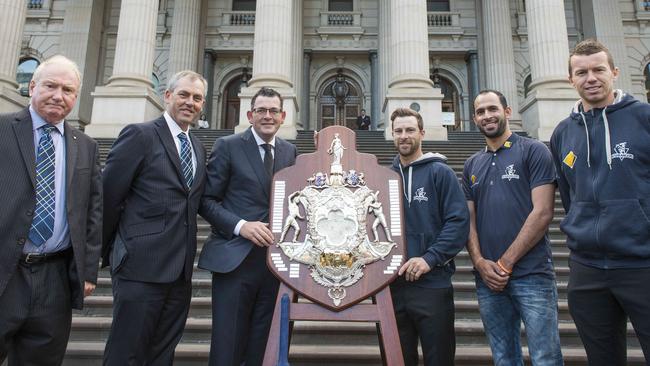
The St Kilda skippership came to Tamblyn in 1979-80, when he took over from Nigel Murch. It was a contentious switch; Murch and Tamblyn were best mates. “Nigel had been captain for four years and we hadn’t had any success at all,’’ Tamblyn recalls. “It was felt it was time for a change. I told him the club had asked me to be captain. Well, that caused a bit of consternation. Nige decided he’d take himself off to Malvern.’’
In his first season Tamblyn led the Saints to the grand final. They played badly against Footscray, which captured its first premiership in District cricket.
The following season St Kilda finished “stone motherless last’’, but Tamblyn provided a highlight when he snaffled eight dismissals (five catches, three stumpings) against University.
He played one year under new captain-coach Phil O’Meara before retiring with 198 First XI matches, 2006 runs, 308 catches and 46 stumpings (his successor behind the sticks, Jason Jacoby, assumed his record, and Jacoby’s successor, Daman Rowan, assumed his; for more than three decades the Saints used three main keepers).
But long before he stopped playing cricket Tamblyn was helping organise it.
He joined St Kilda’s committee in 1969 and stayed on it even after he went off to play for Bentleigh in 1984-85.
Tamblyn became the Saints’ Cricket Victoria delegate in 1988-89, joined the CV board in 1993-94, became chairman in 2000-01 and served through until August, handing over to Russell Thomas at the AGM.
From 1997 to 2013 he was also a director of Cricket Australia.
There was also a role with the ICC as chairman of the East Asia Pacific development committee.
When Tamblyn received a Medal of the Order of Australia in 2014, Cricket Victoria CEO Tony Dodemaide described his “service and commitment’’ to cricket as “extraordinary’’.
“The game’s changed, totally. When I first started administrators did a lot more hands-on stuff,’’ Tamblyn says when his various roles are mentioned.
“But these days when you employ 75 people, like Cricket Victoria, and you’ve got a good CEO and good general managers, the chairman’s job is more about strategy.’’
A state cricket centre was a key plank of Tamblyn’s strategy; he can recall talking about it with former Cricket Victoria CEO Ken Jacobs when he got on the board.
Seeing it through with Dodemaide was the highlight of Tamblyn’s 15-year tenure at the top of Victorian cricket.
There were roadblocks. Some governments were interested in helping, others weren’t. Federal funding programs came and went. The AFL floated the idea of bringing St Kilda Football Club back to the Junction.
“We always had to have it as an alternative, because something was better than nothing,’’ Tamblyn says. “But I’d have to say, what we’ve ended up with is first-class.’’
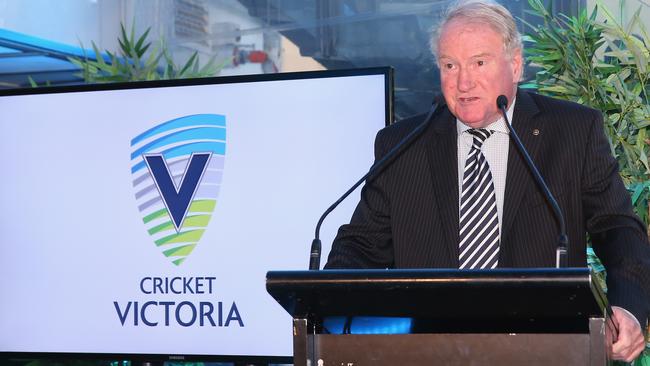
What else brings him satisfaction? At state and national level he was involved in governance changes that brought greater impartiality to decision-making.
“You’ve got to have independence. If people are independent they have no vested interest in who does what. All they want to see is cricket in a healthy position,’’ he says.
The growth of women’s cricket was another focus. He believes all Victorian Premier clubs need to have women’s sections. And he’s adamant they need to welcome expansion, bringing in growth-area clubs like Plenty Valley, Melton and Werribee. But aren’t there enough clubs (18) already? Wouldn’t the talent pool be further diluted?
Tamblyn points out that in 1948 District cricket had 14 clubs and the cricket fraternity was much smaller. “A state like ours should be able to make it happen. Nowadays we’ve got to look at delivering cricket differently to what we have done in the past. I know this will sound dreadful but we need to bring ourselves up to speed with what the young people want.’’
Which brings him to a more radical idea. Tamblyn says the Bushrangers brand belongs to a “previous generation’’ and the Victorian Sheffield Shield team should be replaced by two teams: the Melbourne Stars and the Melbourne Renegades.
“That’s what the kids are coming to watch,’’ he says.
“You could do it quite easily. Victoria has two under-19 teams now, country and city. In exactly the same way we can do that at Shield level, have the Renegades and the Stars. NSW could do the same. I think that would be great. It would give more people an opportunity to make a living out of the game, including players of course, and it would create more of a club feeling as opposed to state versus state. We know that all of the sporting franchises around are far better off with names like Melbourne, Sydney, Perth, Adelaide, rather than Victoria, South Australia, Queensland. We know there’s more interest in that.
“I’m sure the traditionalists would say ‘Tambo’ has got out of the game and he’s lost his rocker. I can assure you I haven’t.’’
Tamblyn has retired to a 1.3-acre property at Barwon Heads and is busy building a garden.
He has no official positions in cricket, but “if people want me to assist I’m only too happy to, if I can’’.
Tamblyn played cricket for a long time and administered it for longer.
What gave him the most pleasure? “Oh playing it. It’s just the most beautiful game, the best in the world,’’ he says. “You can come away just euphoric after a good day.’’

